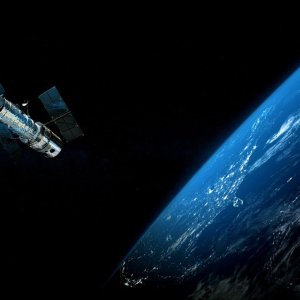
Satellites to Track Sargassum Seaweed in Mexico
 By Alicia Arizpe | Senior Writer -
Fri, 08/21/2020 - 11:51
By Alicia Arizpe | Senior Writer -
Fri, 08/21/2020 - 11:51
Researchers from the University of Nottingham will use grants from the UK Space Agency to fund satellite programs that will monitor the growth of sargassum in the Mexican Caribbean, a large environmental concern that has had severe repercussions for the local tourism industry.
Sargassum, a brown macroalgae known for its bad odor, has become a constant nuisance for hotels and beachgoers throughout the Caribbean coast for the past few years. Through the project Satellite Sargassum Monitoring System (SASAMS), researchers will design and implement a monitoring program that will use satellite imaging to track growth and movement of the seaweed throughout the Mexican Caribbean coasts. Satellites have numerous applications in monitoring Earths environmental phenomena, from weather, storms and cyclones to soil moisture, vegetation and human settlements. The SASAMS system, designed by researchers from the University of Nottingham, will study the growth and movement of sargassum throughout the region and how it is affected by changing sea conditions caused by climate change. It will also provide early warnings that can be used on land to protect local beaches from the spread of the seaweed, reducing the economic impact the tourism sector faces from constant cleaning efforts.
Mexican beaches began to see large quantities of sargassum in 2011 and the amount that washed on their shores only increased over the years, turning the pristine blue waters a deep brown. As seaweed accumulates in beaches, it begins to decay and emit a foul odor often compared to rotten eggs that can cause breathing problems to beachgoers, especially asthmatics. In 2019, sargassum became a constant in Mexican beaches, leading local hotels to spend thousands to remove the seaweed, only for it to return again the following week. Last year, over 1,000km were routinely affected by the seaweed, often in beaches highly popular among tourists such as Cancun, Playa del Carmen and Tulum, leading local hotels to announce an investment of US$2.7 million in the construction of four boats to remove the noxious seaweed. Sargassum returned to Quintana Roo’s beaches again this year’s summer, further complicating a slow tourism season that was already affected by the COVID-19 outbreak. Workers at the Mexican Caribbean continue their daily efforts to remove the high volumes of sargassum from local beaches, reportedly removing up to 30 tons in a day. Moreover, this year’s sargassum season is expected to worsen in the coming two months.
















